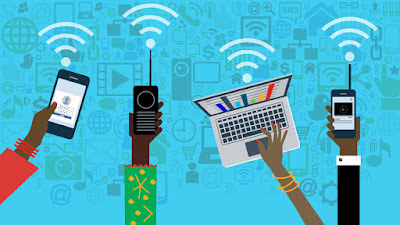IS USING INTERNET SAFE?


The cybersecurity threats follow the rise and have become a major problem for the entire technology sector, from a young man who begins on the Internet with your smartphone to a large company. The introduction of malware on all types of platforms, data theft, invasion of privacy or DDoS attacks on commercial services and the use of cyber espionage strategies in attacks directed against strategic companies, has been a constant in recent years and it forces users and companies to take proactive measures to control it.

Equipment manufacturers and suppliers strive to include the
latest security technologies in their equipment, but these characteristics may
be insufficient if the user or professional is not aware of the importance of
this section and reinforces their security. We remind you of some basic
protection measures to navigate the network of networks, mitigate risk and
protect personal and professional data:
1-
Common sense
Prudence is the best barrier against malware. Take special
care of the section on downloads and installation of applications from unsafe
sites; browsing certain Internet pages; the opening of unsolicited emails or
attachments or that come from unknown senders or those that come from social
networks or messaging applications that contain vulnerabilities exploitable by
cybercriminals for malware campaigns.
2- Use
security solutions
There are multiple providers that offer both commercial and
total security
solutions whose use should be assessed. The same with native anti-malware
applications that some operating systems include. A mobile business
professional should value the use of a comprehensive business security suite and
also other security tools such as a firewall or data encryption systems.
3-
Update the operating system and applications
All operating systems have tools to keep your computers up
to date. And they are mandatory because they include total security
software updates against known threats. As important -or more- than the
above is the update of installed applications to the latest versions since
these usually include security patches. When the versions are older, they have
a greater risk of being attacked by cybercriminals who find vulnerabilities in
the program, with special incidence in some such as Java, Adobe Flash or
Reader.
4-
Protect browsers
All web browsers include advanced internet security
features whose activation we must review and configure because they are the
applications with which we access the Internet and its services. In addition to
end-to-end encryption in synchronization or sandboxing, we must pay attention
to warnings about insecure sites displayed by browsers. Also check the
installed extensions because some are a frequent source of malware
introduction. Another interesting possibility to improve privacy is to use a
session in "Guest Mode" which is totally detached from the user's
original profile, including configuration or history.
5-
Take care of passwords
In addition to the use of advanced biometric identification
techniques in equipment that includes them, the golden rule to be safe online
is to have a strong and different random password for each website, especially
for use in those intended for online banking and commerce electronic. Long and
complex passwords (combining numbers, capital letters and symbols) prevent
brute force attacks, and using a different password for each account avoids
having all of them compromised at once when a data breach occurs. You can use
password managers that create and remember them for us.
6- Use
two-factor authentication
Two-factor (or two-step) authentication provides an
additional level of account security over typical passwords as it is not enough
to just breach the username and password. The service is available on most
major Internet services and should be used whenever possible. Generally, it
uses a verification code served through a mobile application or SMS, to apply
in addition to the username and password when logging in.
7-
Make backup copies
100% security in a connected world simply does not exist
and not only because of a virus since a hardware can error cause the loss of
precious personal and / or professional information. Making backup copies is
therefore highly recommended for a user or professional who seeks to protect
personal and corporate information on a computer in addition to being a
maintenance task that contributes to the health of the hardware. Backups must
be stored on a storage device external to our team or on a cloud storage
service.
8-
Caution with public Wi-Fi networks
Wireless and free Internet access points have spread to
multiple areas in towns, restaurants, airports, train or metro stations, hotels
and in all types of businesses. Demonstrated highly insecure, they can be used
for inconsequential browsing, keeping due precautions, but not for accesses
that require showing your data, accesses and passwords. A mobile business user
should not rely on them for their professional activity, opting for more secure
dedicated mobile broadband networks.
9-
Activate the system restore
Restoring operating systems is a tool that can "save
our lives" in the event of a software error, driver installation or an
application that does not work properly, and also when a virus enters our
computer. System recovery tools allow you to revert the changes made to the
operating system files, settings, settings, drivers, registry keys or installed
programs, which sometimes destabilize the operating system.
10-
Value data encryption
Encrypting or "encoding" the data on your
computer to keep it protected against threats such as data theft or exposure in
the event of loss, theft or inappropriate removal of equipment, is an
interesting measure especially in the professional and corporate segment. Software
vendors offer multiple solutions to do this, and some operating systems have
native tools.
Comments
Post a Comment